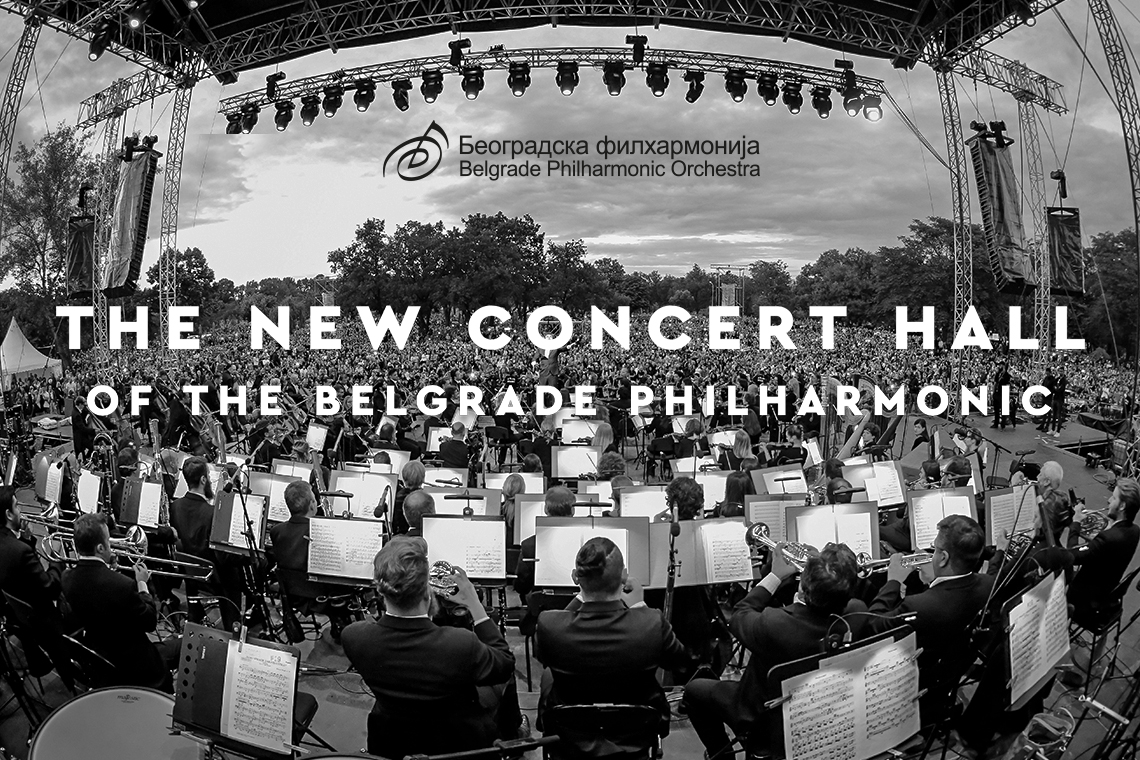
1967 – The existing building of the Belgrade Philharmonic was built on Studentski trg 11 as a temporary solution.
2004 – Adaptation and restoration of the building due to dereliction. Although it was a kind of feat in its time, this reconstruction was still performed within the existing dimensions, which are not sufficient for work and do not allow the further growth and development of the Belgrade Philharmonic. The hall has only 200 seats, there is no room for practice or storage of instruments and equipment, the administration does not have adequate working conditions, etc.
2010 – Meeting of Zubin Mehta and Director Ivan Tasovac – on the occasion of the maestro’s performance with the orchestra in Belgrade – during which they discussed the paradox of a top orchestra and a fantastic audience being created in a country that did not have an adequate symphony concert hall. Tasovac and Mehta defined the construction of a concert hall as a key priority for the further development of the orchestra, the musical and cultural life of Serbia, and as the largest project for the sustainable development of culture in the region.
During the standing ovation at the concert held on February 22, Mehta addressed the audience and Serbian President Boris Tadic, who attended the concert.
In the packed Kolarac Concert Hall, Tadic promised Mehta and the public that the state would build a new building for the Belgrade Philharmonic, which was received with enthusiasm not only by the audience in the hall, but also by the general public in the entire region.
Before his departure, Zubin Mehta asked his friends, including the celebrated architect Santiago Calatrava, to help the Belgrade Philharmonic develop this plan.
2011 – Santiago Calatrava visited Belgrade. On that occasion, he also met with President Tadic, who repeated the same promise he made to Maestro Mehta and the public a year earlier.
Before leaving Belgrade, Calatrava said: “This orchestra, absolutely dedicated to music, with its commitment and success, is constantly working on creating a completely new cultural map of Serbia.” The implementation of the project of the Belgrade Philharmonic’s new concert building is unequivocally an investment in new generations. The connection established in this way with Central Europe – Germany, Austria, Hungary – would firmly position Belgrade as the cultural capital of the entire Balkans.”
2011-2015 – Despite huge efforts, except for sporadic promises, the Belgrade Philharmonic failed to provide substantial support to the project, even in terms of location.
2015 – Before the rehearsal for a new performance with the orchestra, Zubin Mehta, Culture Minister Ivan Tasovac, and Acting Philharmonic Director Darko Krstić, met with Prime Minister Aleksandar Vučić on September 20 at the Kolarac Music Hall.
Mehta, Tasovac, and Vučić announced the construction of the first concert hall built according to world standards in the history of Serbia.
2016 – The City of Belgrade announced an architectural-urban survey competition for the section of Block 13 where the location for the Belgrade Philharmonic’s new concert hall was planned.
2017 – Zubin Mehta is again in Belgrade as guest conductor at the Belgrade Philharmonic’s First Open-Air Concert.
President Aleksandar Vučić, Maestro Zubin Mehta, Director Ivan Tasovac, and Gabriel Feltz, chief conductor of the Belgrade Philharmonic, met in the Serbian Presidential Office ahead of the largest open-air classical music concert in Belgrade’s history, symbolically organized at the site of the new building. Analyzing the stage of the project development, they concluded that a detailed regulatory plan for the given location was being prepared.
2017 – Based on the results of the architectural-urban competition from 2016, the detailed regulatory plan for part of Block 13 was completed.
The Government of Serbia appointed the UNDP Office in Serbia in December of 2017 to carry out preparations for conducting a feasibility study.
2018 – The Belgrade City Assembly adopted the detailed regulatory plan for part of Block 13.
Responding to the Government’s request and after conducting a competition-based procurement process, the UNDP hires the world-renowned engineering company of Ove ARUP to prepare the feasibility study for the construction of the new concert hall. The contract was signed in February and the study was completed by the end of 2018.
The study includes: project justification and objectives, a program-spatial analysis with a conceptual proposal of architectural and technical solutions, an analysis of the proposed location, and an analysis of the estimated value of the building.
All parts of the Study were consulted, discussed, and approved by the Serbian Government, the Office for Public Investment Management, the Chief Urbanist of the City of Belgrade, and the Belgrade Philharmonic.
2019 – The Serbian Government adopted the feasibility study.
2020 – Based on the cost estimate provided by the feasibility study conducted by Arup, the Serbian Government allocated 120 million euros for these needs in the budget for 2020.
2020 – On November 2, the UNDP opened an international competition for the conceptual design of the new concert hall, which is still under way.






